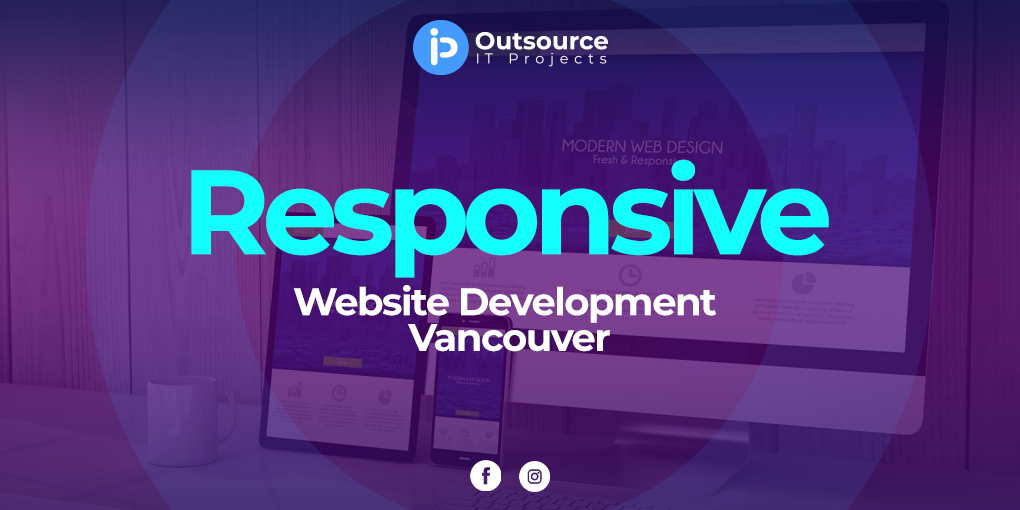Responsive Website Development Vancouver
Initially, the majority of people used desktop computers to connect to the internet. People nowadays use a broad range of gadgets, including computers, tablets, and smartphones. As a result, there is an increasing demand for responsive web design.
Responsive website development Vancouver adopts a strategy that guarantees a website appears and works properly on all devices. This is accomplished through the use of fluid layouts and media queries to adjust the website to different screen sizes.
What is responsive design in website development?
The term "responsive design" refers to a collection of practices and ideas that take into consideration the numerous devices people use to access websites. As more people began to use smartphones to access websites, web designers first responded by creating various versions of customers' websites for each device and display size. Responsive design encompasses the developments that have occurred since then, allowing web designers to construct a single website that adapts to please consumers across smartphones, tablets, laptops, and desktops.
Responsive Development Best Practices:
Let's delve into the best practices of responsive website development Vancouver and how they assist in generating seamless user experiences.
Mobile-First Approach
Although it may appear logical to begin your website design with a desktop, it is frequently preferable to begin with a mobile-first strategy. A core idea of responsive design is the mobile-first approach. Website development Vancouver begins by developing for the smallest screen size and then gradually improving the layout and functionality for larger displays. This guarantees that your website is optimized for mobile visitors, who now account for a sizable amount of internet traffic.
Grids and Layouts
When designing layouts for smaller devices, web designers base their decisions on the most popular device orientation, portrait view. Scrolling becomes more difficult in landscape mode. Fluid grids and layouts are essential components of responsive design. Website development in Vancouver uses relative units such as percentages and ems instead of fixed pixel measurements. This enables content to grow or contract dynamically in response to screen sizes, ensuring that your design stays proportionate and visually appealing.
Flexible Images
Images are crucial in web design, and they must also be adaptable. Images are frequently used as important aspects of websites by web designers. Many homepages, for example, use a single high-resolution image as their backdrop. Responsive website development Vancouver agency optimizes your photos to ensure they stay eye-catching and indicative of your desired design. They test and set multiple image resolutions to each device type so that people with small displays can view your site with lower-resolution photos.
Typography Considerations
Typography is an important part of design, and it should be responsive as well. Often, web designers choose a typeface based on its aesthetic attractiveness and how it complements the overall style of the page. However, whether a typeface can smoothly transition across website versions should be a main concern. Website development Vancouver uses relative units for font sizes to preserve readability across devices. Additionally, uses typefaces that are legible on smaller displays without compromising visual appeal.
Navigation Simplification
Navigation is crucial for the user experience, yet it may be difficult on smaller displays. Scalable navigation repositions menus and navigation bars such that a decrease in display size does not obscure them or make them difficult to click. When consumers migrate between versions of your website, it is critical that navigation functions stay accessible. Website development in Vancouver uses strategies like collapsible menus, concealed navigation panels, or an icon-based menu to prioritize simplicity and user-friendliness. This guarantees that people may access your site effortlessly on any device.
Performance Optimization
Responsive design affects more than simply appearance; it also affects performance. Reduce the time it takes for your website to load by reducing code, compressing pictures, and utilizing browser caching. A website that loads quickly is critical for keeping user interest, especially on mobile devices.
User Testing
User testing is maybe the most important best practice. To truly understand the user experience provided by your website, test it on as many devices as feasible. Test your responsive design on real devices on a regular basis to detect any flaws or places for improvement. Solicit user input and make required changes to ensure that your responsive design actually fulfills their needs.
Continuous Iteration
The internet world is always changing, and responsive design should follow up. Monitor user behavior, technical breakthroughs, and design trends on a regular basis. To stay current and provide the greatest possible user experiences, update and develop your responsive design on a regular basis.
Conclusion
Lastly, recommended practices for responsive design center upon providing adaptive and compelling user experiences across devices. You can guarantee that your website stays relevant, accessible, and aesthetically attractive in today's varied digital ecosystem by embracing mobile-first design, fluid layouts, media queries, and other strategies.
Recent Posts
Our Client
Our clients praise us for quality services in digitizing their brand and vision, making them come back to us as our work speaks for itself!












Our
Testimonial
Is it difficult to scroll through a website and sign up for affordable services and plans? Here’s what our customers think and say about us!




